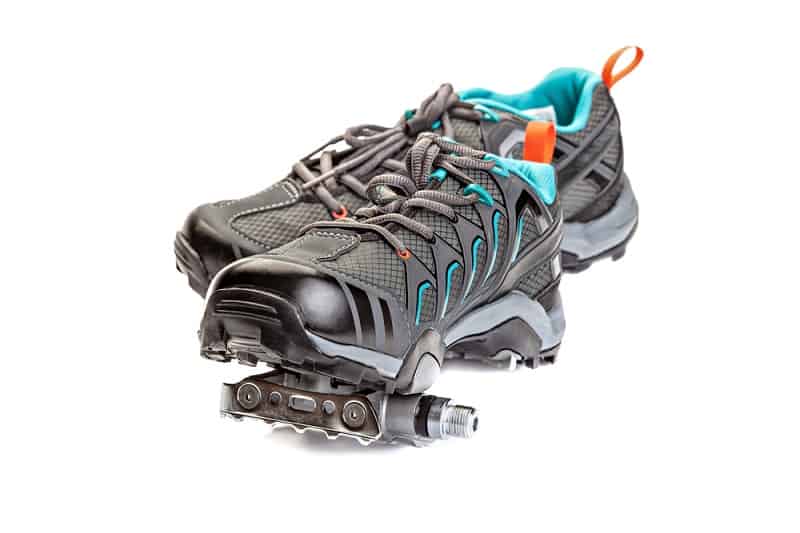If it’s a little too slippery for a mountainside ride, it’s best you stick to roadways.
Views at the top are great for sightseeing, but they won’t be as lovely from the bottom of the hill if you slip!
Don’t worry; road rides can be just as much fun.
If you’re already prepping your kit for a long ride on the road instead, remember not to change it up too much.
You can stick to using your mountain bike (MTB) kit! Yes, you can even use your MTB shoes for road rides.
Gear up and we’ll teach you how you can use your MTB kit on the road, with no major adjustments necessary.
Contents
Pros & Cons of Using Mountain Bike Equipment on the Road
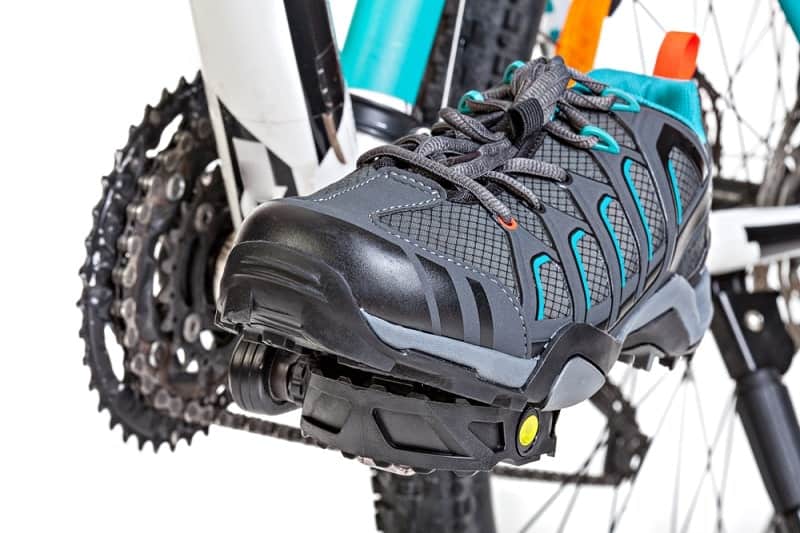
If you are a rough terrain rider, using MTB equipment on the road will help keep you as sport-specific as possible in all forms of training.
Recreational riders may also benefit by opting for MTB shoes, socks, and pedals for more efficient overall riding.
If you are buying equipment, remember to keep these three things on your list of priorities:
- Shoes – Choose mountain bike shoes. They are more efficient and durable.
- Socks – A reliable second layer of protection on your feet is beneficial.
- Pedals – Find the right size to support your riding style better.
First, let’s talk about your shoes.
Advantages
1. Comfort
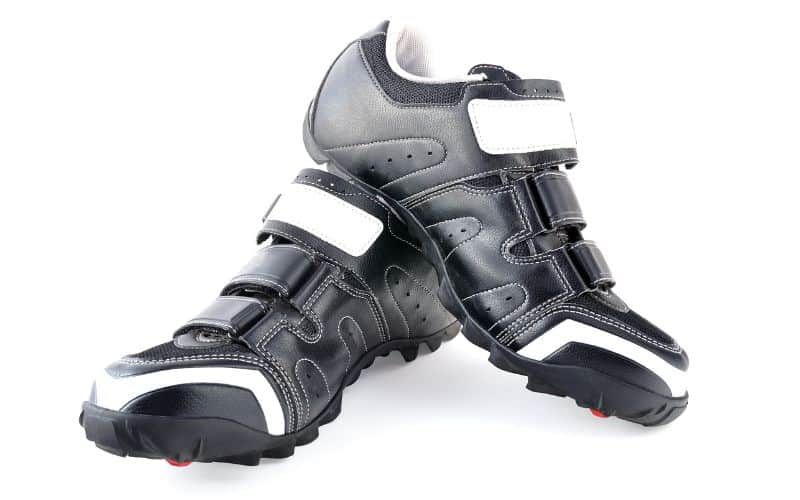
Whether you are riding rough trails or smooth pavement, riding long enough will strain your feet.
If you want a comfortable and energy-efficient ride, opt for MTB shoes. Their stiffer build ensures the power transfer from your feet to the pedals is more concentrated during sprints and rigorous cycling. Its rigid soles also distribute your foot’s force more evenly across pedals.
They can accommodate your feet better for both smooth and rough rides. Their stability can help riders conserve their energy from constantly readjusting their feet, as a cyclist would have to with flexible road shoes.
2. Sports-specific
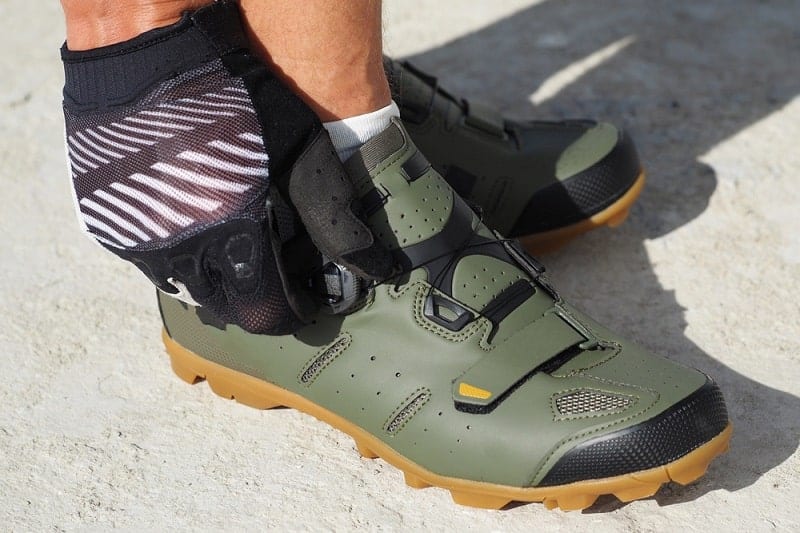
Without even knowing it, you are a cyclist who prioritizes sport-specificity.
Why else would you look for equipment to match your ride more appropriately?
Yes, your meticulousness in acquiring the best-suited gear is the mark of an athlete who respects the sport.
MTB shoes will help you achieve higher levels of sports-specificity.
The five points of contact between the rider and their bike consist of:
- Two hands on your handlebars.
- Two feet on the pedals.
- Your rear on the saddle.
You won’t have to make too many adjustments if your road bike has the same add-ons. For example, if your road bike’s pedals are already clipless and match your MTB shoes.
However, if your shoes don’t fit your pedals, you will have to change one of them out.
3. Durable
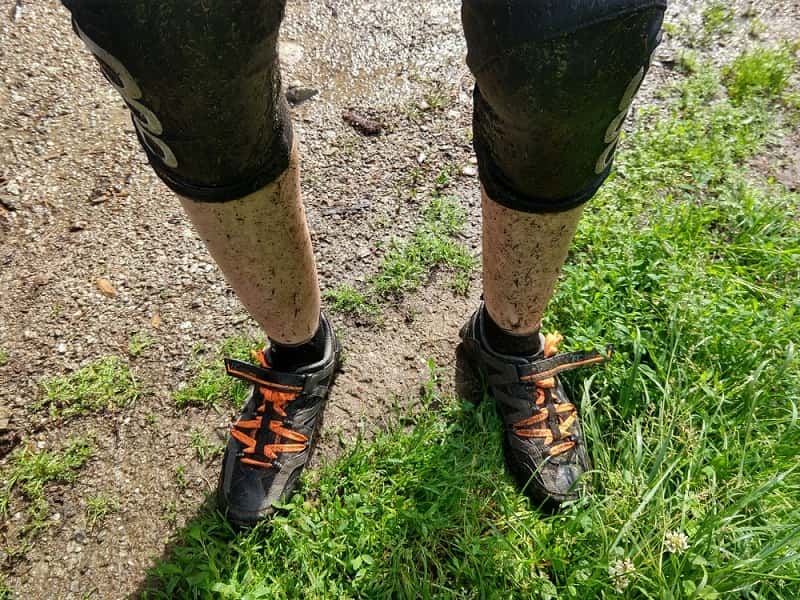
Now, MTB equipment is built for heavy-duty riding.
Using your kit made for rough rides on smoother trails, you can bet it will last you longer.
Materials may vary, but they have this quality in common.
Robust, quality materials are needed for all kinds of riding, especially while facing various elements. Road-riding won’t expose you to as many elements as riding in the mountains, as you know.
MTB kits can fight off pollution, minor debris, and shallow ditches easier, and will easily last you during a cross-country marathon.
4. Versatile
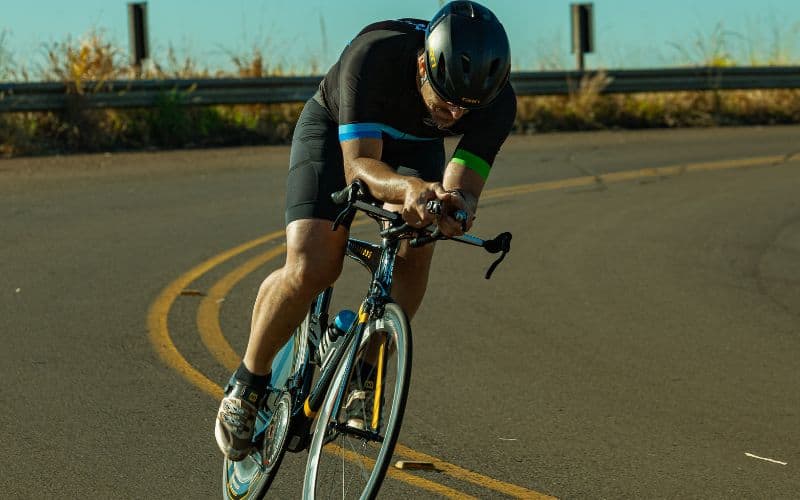
If your budget can only fit one pair of shoes, go for MTB shoes.
They have more flexible soles but tougher vamps (top of the shoe covering the toes), which provide a more versatile overall fit.
Remember this, you can wear MTB shoes for road riding, but you can’t wear road shoes for mountain biking.
Trust us, don’t risk it.
Even a quick off-trail ride with your road shoes can rip them a new one.
5. Usable
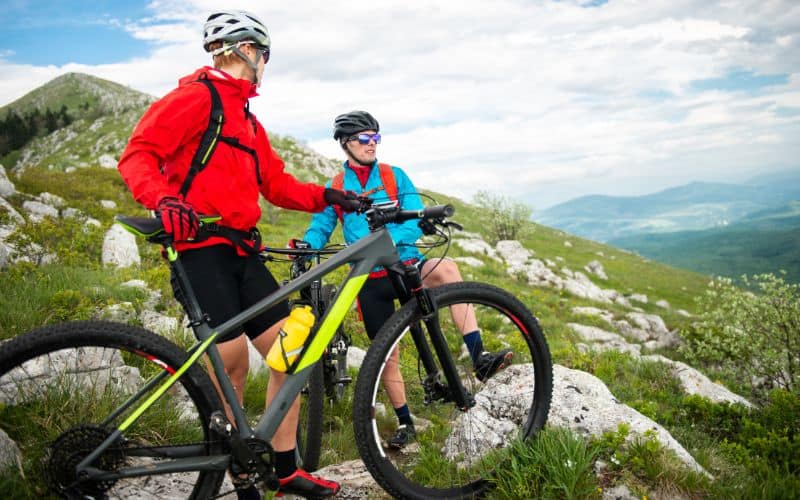
The flexibility of your MTB shoes allows for better walkability.
Its flexible soles allow cyclists to get off, walk around their bikes, and get back on much easier.
Road shoes have harder bottoms and can be too stiff for riders to walk with them on for longer periods.
Their cleats are more significant and can stake to the ground, making walking on softer surfaces more complicated.
MTB cleats recede in the middle and rarely make contact with the ground.
However, they provide better traction without the drawbacks of cleats clinging onto moist soil.
If you get off your bike to walk through a deeper puddle, wet pavement can be slippery, and MTB shoes can save you from turning the road into a Slip & Slide.
Disadvantages
While there are many, many advantages of using mountain bike shoes on the road, there are a few disadvantages you should know about as well.
First of all, there are road shoes for a reason. Otherwise, there wouldn’t be road options for road bikes, and MTB shoes wouldn’t be called mountain biking shoes, just bike shoes.
1. Temperature
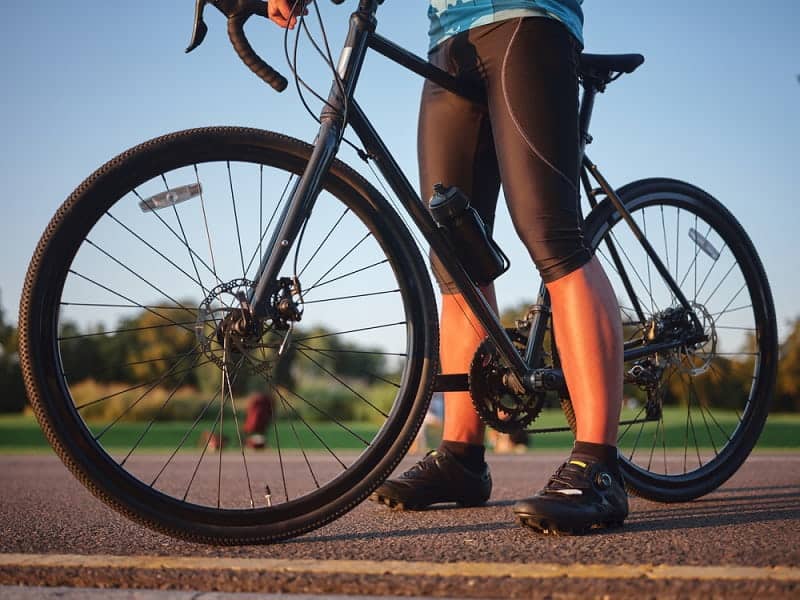
We are assuming the risk of sounding contradictory and saying MTB shoes aren’t always the most comfortable, temperature-wise.
Their durable shells come at a price. They keep debris out, but temperatures in much better for much longer.
They come with more solid and robust materials and fewer avenues for airflow.
The insufficiency of air exchange can heat things up faster and cause cyclists discomfort, especially those who prefer cooler gear for more comfortable riding.
Thermal wear that can sustain higher temperatures is excellent for windy and winter weather.
Still, the sun searing down on cyclists along with black hot pavements can be sweltering, affecting a rider’s overall performance.
Its stiff vamps and receding cleats on small and wide pedals can generate more hot spots in various areas.
They aren’t for everyone, and tolerating this might be more overwhelming than the perks it can offer cyclists.
2. Lesser Watts
While they may only be a trivial/negligible amount, every little bit counts.
Races require cyclists to give it all they have, with all watts counting for something.
If your road ride is competitive, spend a little extra on road shoes.

While comfort, durability, and flexibility are all essential, speed and energy efficiency mean everything in commissioned races.
3. Callus
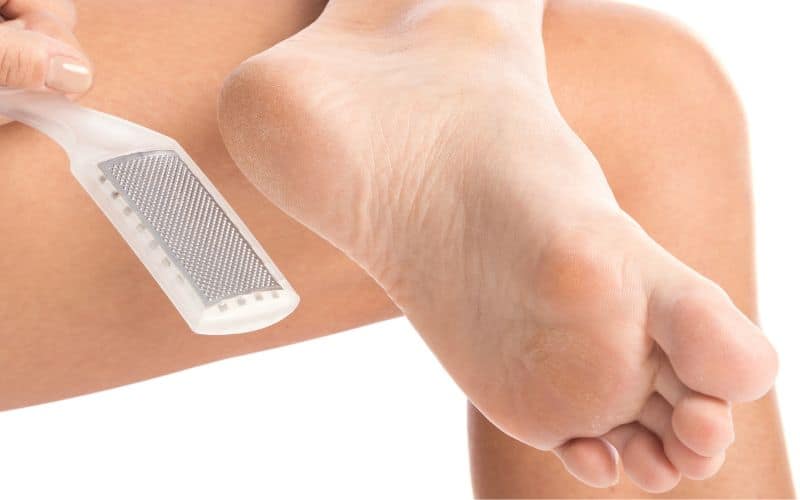
MTB shoes have stiff vamps, and they can protect your feet from external elements. However, it can cause an internal ruckus on your feet.
All the little ups and downs, vibrations, and sweat building up within can lead to more calluses.
4. Thinner Pedals
MTB shoes typically fit into slimmer pedals, hindering both your watt-production and comfort.
Wider pedals allow riders to push harder and faster, with fewer adjustments in between. Riders can stay more focused on the road than on their feet, punching through their pedals.
A cyclist can waste time and energy affixing their feet back onto their pedals, leading to accidents on the road.
5. Weight
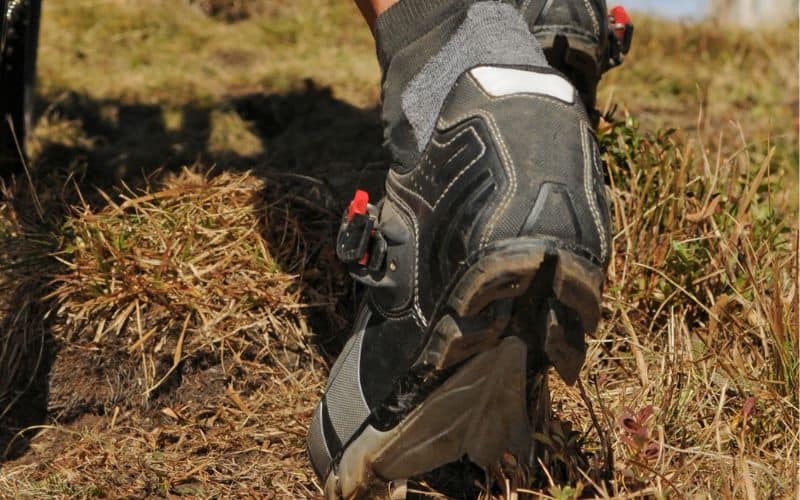
All those robust top-quality materials can weigh heavy on your feet and pedals.
Most rookies are still struggling to understand the technique of pulling pedals up and not just pushing them down.
Lifting slightly heavier shoes can make the difference for cyclists, shaving valuable milliseconds off your time.
Choose between the weight it will cost your wallet and the unnecessary seconds it will add to your overall time.
What Mountain Biking Shoes Make Better Road Shoes?
If you are buying shoes for the first time, here are some traits you should look out for if you want to switch up trails later.
1. Materials
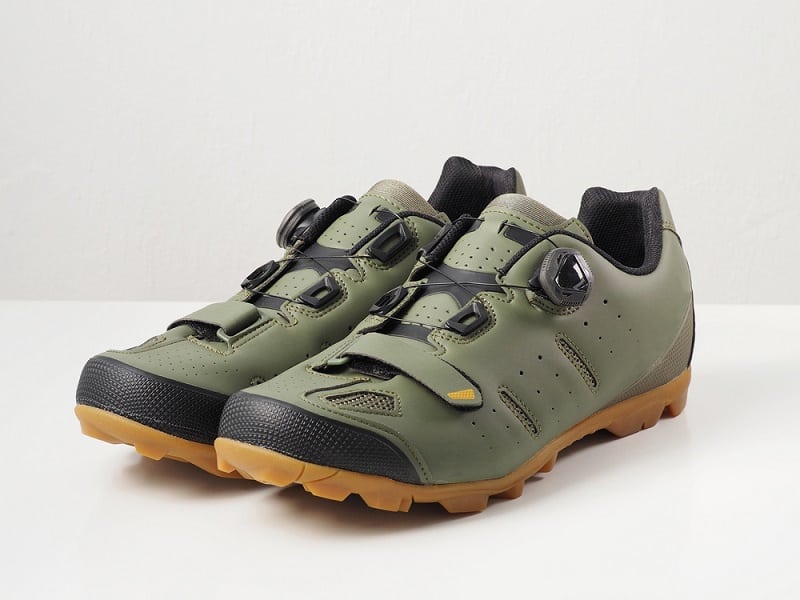
Of course, the first thing you should notice isn’t just how they look. While aesthetics are arguably important, remember to feel the top, the bottom, the inside, and the cleats.
Experienced riders will be able to tell the difference between good material from cheap or poor quality ones.
The rule of thumb is how robust they are:
Are they hollow? Do they seem too soft? Are they solid? Are they thick enough?
2. Connection
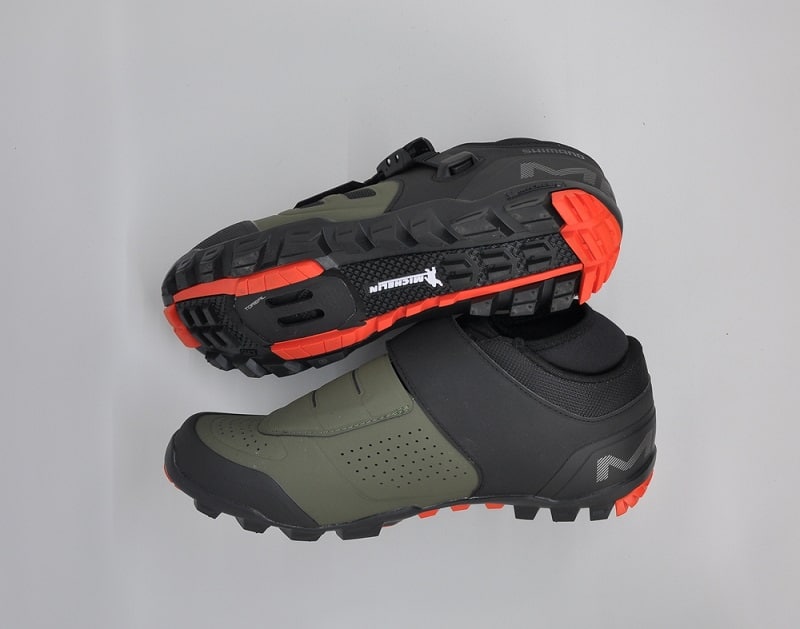
Cleats are the mechanical connection between shoes and pedals in clipless setups. Cleats are there for a reason. They aren’t there to provide better traction running through the mud.
Some thirty years ago, clipless mechanisms were introduced to replace more traditional systems such as straps and toe clips.
Clipless systems can do without further components securing your feet to the pedals. Still, straps are buildable components you can add to clipless pedals for more secure riding.
3. Adaptability
Cleats are important.
Cleats have encompassed all kinds of cycling, with few cyclists still opting for traditional toe clips and straps.
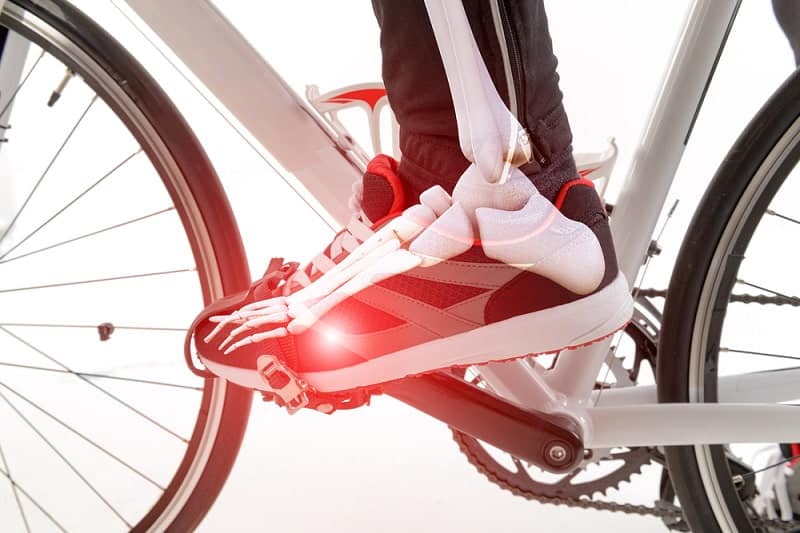
However, if you aren’t going for a clipless system, they can hinder secure connections between toe clips and straps.
If you use a road bike with a strapping system, you will have difficulty adjusting to clipless pedals.
4. Comfort
Stiff, flexible, protective, versatile, and above all, comfortable.
Try it on for size, and not just when you are static. Move around in them, put them in motion, and feel how well or how tightly they hug your feet.
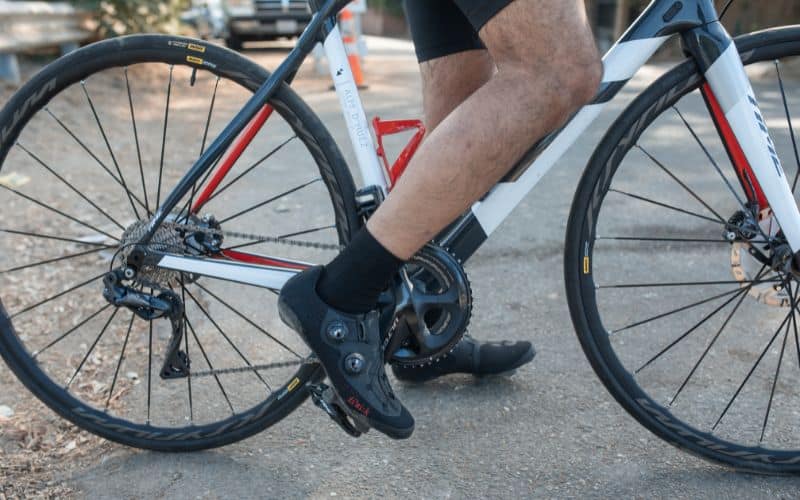
Prioritize your comfort because they may look nice now, and they may provide your feet with protection. However, your feet can suffer in the long term.
If they are suffocating your feet now, just imagine pushing and pulling while wearing them for long periods.
5. Weight
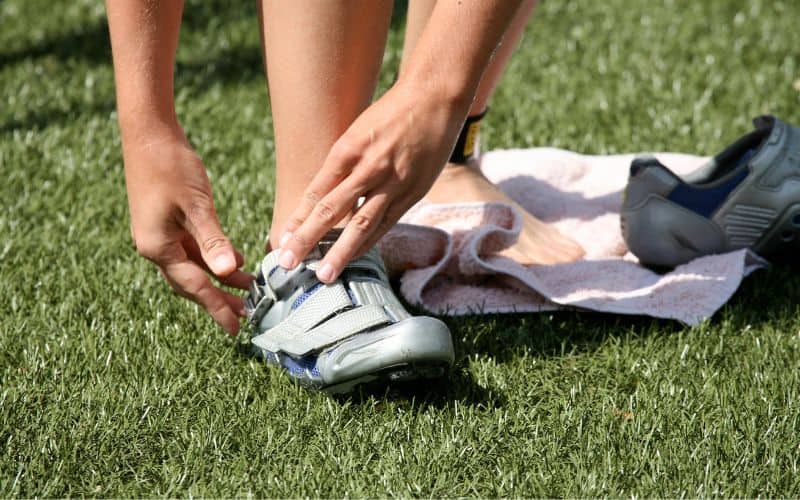
Pick lightweight shoes if you aren’t comfortable with any additional weight, even small amounts of it.
Riding in races, recreational or professional, requires more energy efficiency. Any additional weight can weigh you down and affect your performance.
Compare lightweight road shoes to MTB shoes and gauge the difference between the two if you want to trade-in speed and energy efficiency for overall protection and durability.
Last Leg
Hopefully, by reading this article, we were able to shed light on matters regarding MTB shoes and pedals.
Remember, while road shoes are lighter and arguably aid in energy efficiency, MTB kits help your overall performance.
Pick lightweight MTB shoes made with quality material. If they end up costing you a tad more, it will be worth it.
You can use MTB shoes for both smooth and rough terrain.
Check out Sidi Jarin's Cycling Shoes if you want an idea of what versatile, durable, and comfortable cleats are supposed to look like.
